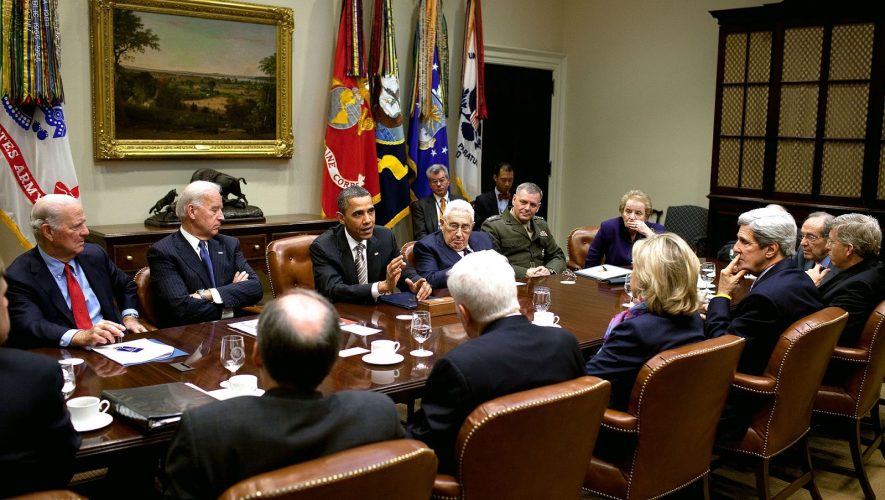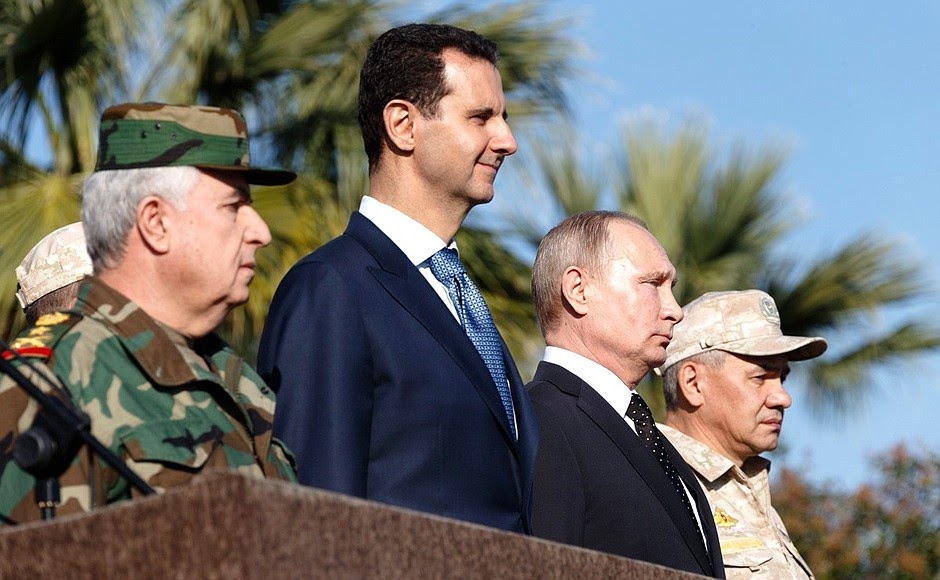The New Strategic Arms Reduction Treaty (New START)—a bilateral agreement that constrains the US and Russia’s nuclear arsenals—expires in February. Despite bipartisan support for an extension, President Trump has been adamant that the US will not accept Russia’s unconditional offer for a five-year continuance.
The administration is choosing instability over stability. Ambassador Marshall Billingslea, the top US arms envoy, has even threatened to spend Russia “into oblivion” to win a nuclear arms race. This flexing could have worrying spillover effects on the national security strategies of European and Asian countries.
While the Cold War-era bilateral arms control regime is out of date, that does not warrant a withdrawal from New START. The US should extend the only remaining agreement between the two largest nuclear states to prevent an unchecked arms race. The extension of New START should, as the name suggests, serve as a new start to update the arms control framework.
The Changing Security Environment
New START took effect in 2011 after the original START expired in 2009. START proved successful, reducing American and Russian strategic nuclear arsenals over eighteen years. After several attempts to replace START with a new treaty for further reductions, the Obama administration signed New START. Among other things, the updated agreement restricted both sides to 1,550 deployed strategic warheads (the part that contains explosives), roughly one-fourth of what the original allowed. To keep both sides in the agreement, New START loosened conditions on how to reduce warheads; specifically, it adopted a limit on the aggregate number of warheads instead of individual limits for different types of weapons.
Through these agreements, the US and Russia can verify each other’s capabilities. The latest data exchange from September 2019 suggests that both parties have limited their warheads, missiles, and launchers as required. Clearly, the current formula is feasible for both sides. If the US were to get rid of New START, there would be no way of assessing Russian capabilities. It would also allow Moscow to rapidly build its arsenal and outrun Washington.
While acknowledging Russia’s apparent compliance with New START, Assistant Secretary of State for International Security and Nonproliferation Christopher Ford told Congress that Moscow is not complying with other arms control obligations.
This is not the first time Trump has threatened to withdraw the US from a “bad deal.” Last year, Trump withdrew the US from the Intermediate-Range Nuclear Forces (INF) Treaty which requires the destruction of ground-based ballistic and cruise missiles with ranges between 500 and 5,500 kilometers, as well as their launchers and support equipment. This came after years of documented Russian violations of the treaty. Regardless, this allowed Russia to continue developing intermediate-range missiles capable of reaching Europe, which it could do without tiptoeing around the treaty.
In May, the US announced its intention to withdraw from the Treaty on the Open Skies, which permits signatories to conduct reconnaissance flights over the others’ territory to collect data on military activities. The Trump administration cited the same justification it used for leaving the INF Treaty.
The US’ motivation for withdrawal this time seems to be twofold—that New START doesn’t cover all of Russia’s nuclear capabilities and that it needs to include INF-covered systems, newer delivery systems, and tactical nuclear weapons (non-strategic, shorter-range missiles usually up to 500–600 kilometers).
Moscow rejects any broader mandate and counters with their concerns that Washington possesses non-nuclear-capable launchers and bombers that can easily be converted into nuclear-capable ones, violating the treaty. The difference is that Russia is willing to resolve it within an existing framework, while the US is discussing a withdrawal.
The other factor at play here is China. While Joe Biden would extend New START with or without China, Trump is demanding Beijing be included in any extended agreement. Trump’s response stems from the Chinese advantage in INF-range missiles and reports that the country plans to double its stockpile of nuclear warheads in the next decade. The US has been forced to make this demand as a reaction to the rapid modernization of the Chinese military.
A Rash Decision
Trump’s goals are irrational. New START already allows significant access through on-site inspections and other verification measures. It would be in Washington’s interest to maintain this structure while negotiating for more. Considering the upcoming expiration deadline—just fifteen days after the new president takes office—the US simply can’t afford to risk losing a functioning agreement for an infeasible one.
Further complicating this process is China’s disinterest in nuclear arms reduction. A 2019 estimate indicates that the US and Russia each possess around six thousand warheads (90 percent of the global total) compared to China’s three hundred. As such, Beijing noted that it would hold arms control talks only if the US and Russia agree to cut their arsenals to China’s level. The onus is on the countries possessing the largest arsenals, not China.
China’s nuclear doctrine has been restrained, centering on no-first-use. Its relatively small number of nuclear warheads has been deliberate, with these weapons serving as a deterrent, precluding preemptive use. Including China in the treaty would actually legalize an expansion of its arsenal to American and Russian levels.
Recent American maneuvers could lead China to doubt America’s commitment to arms reduction. In 2018, the Defense Department described a need to use smaller nuclear weapons to deter adversaries from limited nuclear escalation. Perhaps as a result, the US deployed a submarine-launched low-yield nuclear weapon last year—its first new nuclear weapon in decades. This mixed messaging isn’t new, and the US will be hard-pressed to convince China to reduce its arsenal while expanding its own.
The US hopes that developing new weapons will threaten China into joining an arms control agreement. While that is certainly possible—if it doesn’t lead to an arms race—it won’t happen before New START expires. As such, there is no valid argument against extending the treaty.
The Trump administration’s threat to spend adversaries “into oblivion” is imprudent given the costs. The US will not be able to spend excessive amounts because COVID-19 will undoubtedly lead to budget cuts.
The Navy has already faced trouble balancing modernization and readiness with a budget that doesn’t support upgrade costs. The Congressional Budget Office forecasted that spending on nuclear weapons would peak at about $50 billion per year (eight percent of total defense spending) in the late 2020s and early 2030s. The Government Accountability Office found that these modernization plans “do not align with its budget, raising affordability concerns.” This assumes New START is extended; if the US withdraws, costs would almost certainly skyrocket.
Not only would a world without constraints on the two largest nuclear powers be absurd, but it would affect the decision-making of other states. Nuclear states like North Korea could see US withdrawal as a lack of commitment to arms control and pull out of future negotiations. US allies in Europe and Asia will be forced to find ways to deal with an unconstrained threat from Russia and China. Whatever policy decisions are made, there will be more instability without arms control.
The better strategy is to keep Russia in check while exploring ways to engage China. Trump’s fundamental error is believing he can force China to negotiate a deal. Even if that were to happen, it wouldn’t last unless both sides had a vested interest, as was the case during the Cold War. China can’t go from rejecting the agreement to joining it overnight. There are steps it can take—such as increased transparency—while the US and Russia extend New START.
The US concern that China must be reined in is not unwarranted, but that’s more a reason to keep Russia in than freeing it from limitations. The US cannot maintain readiness on two fronts. If China is the main concern, including it in a half-baked deal won’t help.
Future Challenges to Arms Control
As of this week, the Treaty on the Prohibition of Nuclear Weapons had enough ratifications to take effect this coming January. The UN General Assembly adopted it in 2017, hoping that it would legally mandate states to work toward total elimination of their nuclear weapons.
This is a significant development for arms control, but insufficient considering most nuclear states and their allies are not party to it. It certainly doesn’t help when the US is urging countries not to ratify the treaty. In a realist world, states operate in a zero-sum game and try to outdo each other. Nuclear states have the last word in such a world. This distrust of other states ushers in a negative cycle of weapons development and distrust.
In addition, warfare is changing fast enough that Cold War-era arms control may be rendered obsolete. Newer weapons—from hypersonic glide vehicles that evade radar detection to non-nuclear precision-strike munitions that minimize collateral damage—have blurred the lines between weapon types. Significant progress in AI and cyberattacks could also deceive defense systems and swiftly detect enemy missile launch sites previously difficult to locate. These technological advancements will complicate future arms control agreements, especially as it becomes increasingly challenging to decide which weapons fall under which treaties.
But that doesn’t make arms control useless. The world has successfully reduced the number of nuclear weapons to around a fifth of its peak during the Cold War. This would not have been possible without US–Soviet arms control agreements. These must continue and eventually include other nuclear states. For this to happen, the two largest nuclear states must continue negotiating their own arms control agreements. While those may not cover all weapons or include all countries, significant parity could eventually push other nuclear states to see the destabilizing effect of nuclear weapons.
Non-nuclear states have their role to play too. The ratification of the TPNW is a good start, but it must be followed by work outside these multilateral institutions to keep the ball rolling. Non-proliferation treaties are worthless if nuclear powers won’t engage.
Multilateral institutions and bilateral arms control go hand in hand. A sustained effort by the US and Russia will go a long way to compel other key players like China to join. American retreat, inconsistency, and buck-passing will give other nuclear states an excuse to disengage.
We need time to consider where newer weapons fit in and devise a framework that benefits everyone. We aren’t there yet.
The US should take up President Putin’s suggestion to extend the treaty and freeze development for a year to talk things out. New START will provide a lifeline of sorts—badly needed time for the main players to come up with innovative solutions. Until then, it would be in the interest of the US, and frankly the world, to extend New START.



